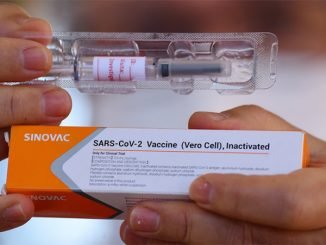
Kampala, Uganda | URN | Drug resistance to the first line HIV treatment is on the rise in Uganda, according to a report published by the World Health Organization (WHO).
Findings from a survey carried out between 2014-2018 show increasing resistance to Efavirenz and Nevirapine, the first-line HIV treatment. The survey shows that in the last four years, the level of resistance in 12 countries in the world including Uganda has increased.
The study shows that the level of drug resistance in Uganda among adults is higher than 10 per cent. Resistance in women stands at 16 per cent while that of men stands at 14 per cent. This means that more people will be enrolled on the second-line treatment, which is more expensive compared to the first line treatment. Second-line treatment consists of Lopinavir/Ritonavir.
The report looks at drug resistance in 24 low and middle income countries. It examined the level of drug resistance among persons who were enrolled on ARVs during that time period. The study randomly selected data from clinics in 18 countries. Uganda was ranked sixth following Papua New Guinea in fifth position and Nicaragua in forth position. South Africa was ranked third coming after Cuba and Honduras in first position.
In 2018, Uganda announced the move to Dolutegravir as a first line HIV drug in line with WHO guidelines. The drug was supposed to replace the use of Efavirenz and Nevirapine as first line drugs. It is estimated that 400,000 patients have so far been switched to the new drug.
Read Also: Mayors’ Alliance proposes compulsory HIV/AIDs testing for Ugandan men
A 2018 report released by the Uganda Virus Research Institute showed that an estimated two people in every ten living with HIV suffered from drug resistance. The study showed resistance was high among women and children enrolled on ARVs. Dr. Nelson Musoba, the Director General of Uganda AIDS Commission, says ART resistance in Uganda is due to mutating viruses and poor drug adherence.
“ART drug resistance is normally seen in cases where patients do not adhere to treatment or when the virus mutates and stops being affected by the drugs. In such cases, we have no option but to push people on the next line of drugs.” Data from the Ministry of Health shows that an estimated 1.2 million people are living with HIV and are currently on ARVs.
96 per cent are on first line regimen and less than 4 percent on second line. 300,000 are estimated to be on third line drugs. Dr. Joshua Musinguzi, the Programs Manager AIDS Control Programme, says the findings are not good. “Such figures are worrying but they are caused by many people failing to adhere to treatment. They need to be dealt with because if they don’t, they can affect our 90:90:90 goal,” he said.
Read Also: Couples still detest joint testing for HIV
Dr. Musinguzi says they need to improve their programs to reduce drop outs and improve retention. He says one of the measures the ministry is coming up with to maintain retention is partner involvement to ensure that people comply with drug regimens. “We want HIV treatment to be attached to partners. This way, a partner will remind their fellow partner to take the drugs,” he said.



